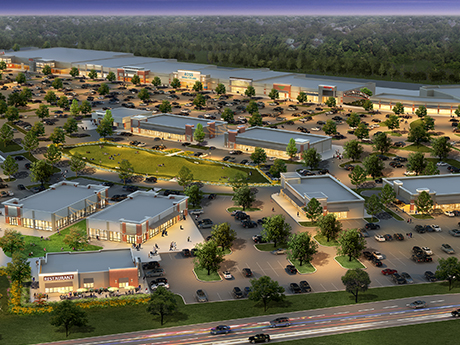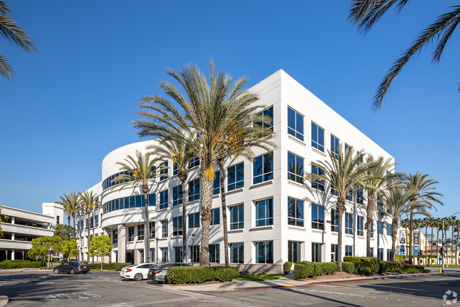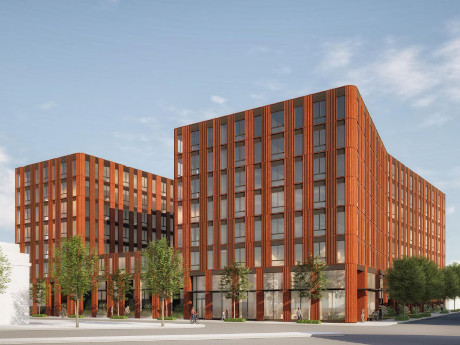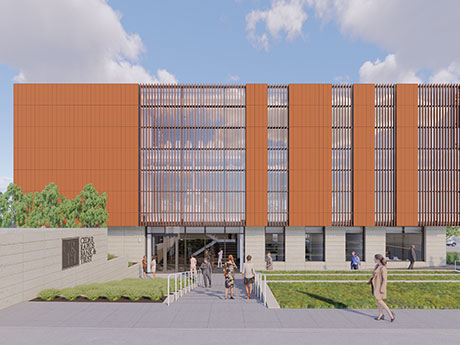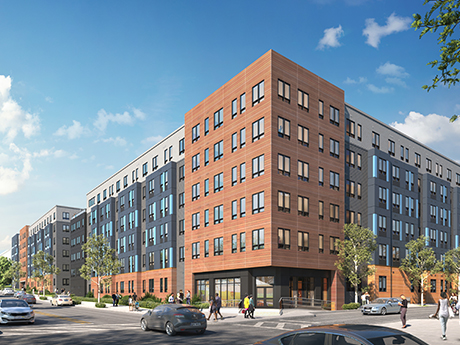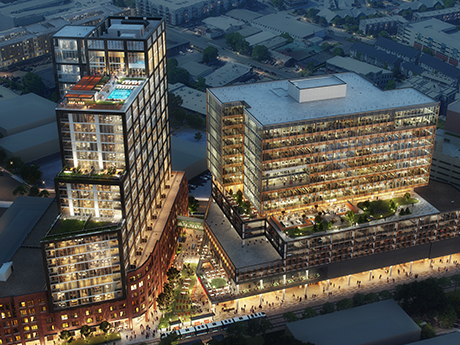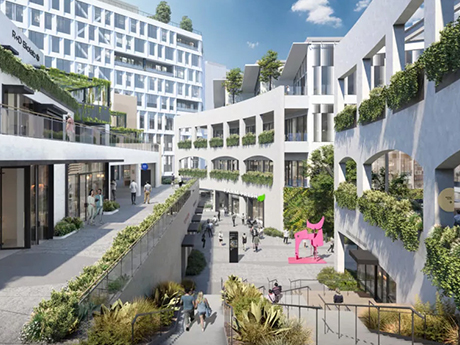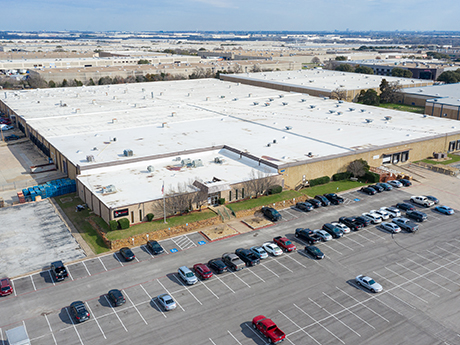By Herb Weitzman, executive chairman, Weitzman The major Texas metro areas of Austin, Dallas-Fort Worth, Houston and San Antonio all share one thing in common: Their retail markets are posting balances of supply and demand that outpace every other major commercial real estate category. This milestone was not achieved without overcoming significant obstacles. The major Texas retail markets have survived decades of back-to-back challenges, including major market disruptors like e-commerce, the 2008 Financial Crisis that knocked out several major chains and 2020’s pandemic-induced shutdowns. Each of these significant disruptions and challenges first resulted in store closings and higher vacancy rates. But retail operators as well as commercial brokers and landlords all learned from the setbacks by embracing the lessons of these disruptions to understand how to creatively bounce back stronger. As a result of the market’s careful pivoting, the retail markets in Texas’ major metros have right-sized and are reporting a yearslong trend of balance in supply and demand. To illustrate this point, we used the mid-year reports from CoStar Group on the non-retail CRE types. We compared retail vacancy rates in the four Texas markets to CoStar’s mid-year rates for the industrial, office and multifamily spaces in each of …
Market Reports
— By Brian C. Childs, Executive Managing Director, NAI Capital Commercial — Orange County office has historically been last in and first out of any recession or economic setback. That trend continues as an office recovery is in sight in this post-COVID marketplace. The challenge of encouraging workers to return to the office post-pandemic has slowed considerably. The rate of space being vacated in Orange County’s office market slowed to less than a 1 percent increase quarter over quarter in vacant space in the second quarter of 2023. This is compared to the 17 percent year-over-year rise, resulting in a total of 20.9 million square feet of vacant office space. Similarly, the growth rate of available sublease space also experienced a slower pace of 0.2 percent quarter over quarter, compared to a 23.4 percent year-over-year increase, reaching 4.6 million square feet. The second-quarter office vacancy rate sits at 13.3 percent, versus 13.2 percent in the first quarter. Overall office vacancy was at 11.5 percent a year ago. As the availability of office space has begun to stabilize, the average asking rent remained unchanged compared to the previous quarter. There was a minor decline of …
Central Florida retail is alive, well and growing, thanks in large part to Florida’s continuing resilience to the nation’s economic challenges. Thousands of people are moving to the state each week, the Orlando area’s economy continues to diversify beyond tourism and residents continue to show confidence with their retail spending. That said, there are significant challenges facing new retail developments, due to the cost of construction and other inflationary pressures. We expect this to be a major issue for the rest of this year, and it will require thoughtful planning for everyone involved in these projects. As we look at the remainder of 2023, we see two big takeaways: • For brick-and-mortar retail, it’s important for developers and owners to bring in concepts that are new and fresh. In some cases, this involves established retailers getting creative with their spaces, like what Macy’s is doing with its new Market by Macy’s concept, which uses a smaller footprint than traditional Macy’s stores. • To make new retail developments happen, developers, landlords and tenants need to be inventive in how they structure deals, whether it’s sharing in construction cost overages or giving tenants more time to get their spaces ready. With that …
— By Daniel Natsch, Senior Managing Director and Partner, Ethos Commercial Advisors — Portland made it onto the national scene even before the last economic cycle. It’s a charming and relatively inexpensive West Coast market that boasts a great culinary scene, never-ending outdoor activities and its own sense of weirdness. It’s no wonder that Portland’s ticket to the “big time” came by way of population growth throughout the 2010s, spurred by young, highly educated professionals. Alongside that growth came the need for more housing. Institutional capital took note and began targeting Portland for investment. The development boom of the 2010s eventually began to slow. Portland’s multifamily industry took another blow when Inclusionary Zoning legislation was passed. To beat affordable requirements, developers grandfathered as many projects as possible, creating a huge wave of entitled properties. Many of these projects would see their way through permitting, and the pre-inclusionary housing moniker became more valuable to investors. At the time, it appeared that significant in-migration would offset the significant deliveries stacking up in the pipeline. Then came 2020. Downtown Portland became a ghost town as employees stayed home amid the pandemic. It was quiet until large crowds took to the streets to speak …
By Scott Olson, Skogman Commercial Despite a derecho, a pandemic, inflation, supply chain issues and a possible recession, Cedar Rapids continues its rapid growth as evidenced by the ranking by “American Growth Project 2023” as a top 15 fastest-growing mid-size U.S. city. But, its other national rankings are just as impressive: • 23rd-Best Run City in U.S. (wallethub.com, 2023) • Top 100 Best Places to Live in America (Livability, 2023) • 23rd-Best Place to Raise a Family (wallethub.com, 2023) • 13th-Best City to Buy a House (niche.com, 2023) • Ranked No. 21 of Cities with Lowest Cost of Living (Business Insider, 2023) • A Cleanest U.S. City by Short-Term Particle Pollution (American Lung Association, 2023) • Two Nationally Ranked Medical Centers: St. Luke’s Hospital and Mercy Medical Center (PINC Al/Fortune and Newsweek, 2023) • Top 50 Best City for Jobs in America (wallethub.com, 2023) • No. 22 Safest City in America (wallethub.com, 2022) • Best Tasting Drinking Water in Iowa (Iowa Section, American Water Works 2022) In addition to these rankings, Cedar Rapids is also continuing to make major progress on recovery from previous national disasters: • 2008/2016 historic floods are resulting in the $750 million flood control system making …
By Taylor Williams For the past several years, including during the height of the pandemic, the Boston retail market has performed well, if unspectacularly. Defined and driven by stable fundamentals in terms of job growth and tenant demand, the state capital’s retail sector has proven itself a reliable environment in which to expand store counts and park long-term money. But few, if any commercial markets and asset classes are wholly immune to the effects of sluggish and disruptive macroeconomic activity. Through no fault of its own, the Boston retail market is seeing its paces of growth slow across the key verticals that are development, leasing and investment sales. That said, seasoned players in this space know better than to panic. Boston remains a dynamic market, despite data from the U.S. Census Bureau showing that the city’s total population shrunk by about 25,000 people, or 3.7 percent, between April 2020 and April 2022. In addition, even in an inflationary economy, Boston consumers tend to retain healthy disposable income levels. A burgeoning life sciences sector that is bringing thousands of well-paying jobs to the city and a steady flow of students and young professionals across its 25-plus colleges and universities lie at …
— By Robert Gallegos, Senior Vice President, The Mogharebi Group — New Mexico is rapidly becoming an important multifamily market for both investors and developers as the state experiences explosive job and population growth, which is expected to continue on an upward trajectory over the next five to 10 years. While Albuquerque remains the most targeted multifamily market in the state, it is worth noting that the tertiary market of Santa Teresa — near El Paso and the Mexico border — is becoming a hotbed for multifamily investment. Santa Teresa is a key inland port serving as a strategic focal point for intermodal shipments in the Southwestern U.S., with more than 6 million square feet of industrial space in use and nearly 1 million square feet under construction. As more jobs flood into New Mexico, the demand for quality rental housing will continue to far outstrip supply. With a population of more than half a million people and counting, it is no wonder Albuquerque is seeing the bulk of investment activity. The city has drawn an influx of new residents thanks to its diverse economy, relatively affordable cost of living and quality of life. According to Numbeo, one of the largest cost-of-living …
In the wake of the COVID-19 pandemic, Charlotte’s retail segment has experienced a remarkable revitalization, fueled by a convergence of factors that have reinvigorated the city’s economic landscape. With a thriving job market, affordable cost of living and a surge in adaptive reuse, mixed-use and infill projects, Charlotte has become a hotbed for retail activity. As the city emerges from the challenges of the pandemic, it has embraced innovative approaches to urban development, transforming once-vacant spaces into vibrant hubs of commerce. Several macro-economic trends have impacted retail growth in Charlotte. Population growth in the city has spurred an increase in consumer demand, leading to a vibrant retail market. In a May 18 article from the Charlotte Business Journal, it was noted Charlotte added more than 15,000 people to its population count between 2021 and 2022, the nation’s fifth-highest numeric increase during that span, according to the latest estimates from the U.S. Census Bureau. As more people choose to settle in Charlotte, the demand for goods and services has risen, prompting retailers and restaurants to expand their operations and invest in new locations. Additionally, the rise of e-commerce and the shift toward online shopping have compelled retailers in Charlotte to adapt …
— By Jerry Holdner, Avison Young — Southern California Region Lead, Innovation & Insight, AVANT — The San Diego office market is starting to show signs of weakness. Unemployment remains low, but it is important to highlight that job creation has been uneven. The bright spot is that high-value-added jobs in a broad range of sectors, such as scientific research, medical products and pharmaceutical development continue to grow, which bodes well for San Diego. We are still uncertain about a recession. It could be short and shallow like many are predicting, or we could be in for a period of monumental headwinds. Investment sales have retreated as interest rates increased, and office workers have been reluctant to return to the office. This has created an uncertain picture of our office market going forward. The rise and future uncertainty of the pace of inflation has caused many to take a “pencils down” approach. This has caused many to slow, pause or even halt their dealmaking, growth, capital investment and development efforts as the ability to borrow funds has become difficult. San Diego’s office vacancy currently stands at 12.3 percent, and 18.9 percent of the total office market is available (including sublease …
By Ron Gilbreath, managing director of asset & property management, Westmount Realty Capital It’s no trade secret that global lockdowns during the pandemic had a significant and lasting impact on supply chains worldwide. EY’s 2023 poll revealed that 72 percent of senior-level supply chain executives experienced negative impacts on their businesses due to the pandemic, resulting in the emergence of a concentrated focus on supply chain visibility. The crucial point to acknowledge during this continued disruption is that these impacts are closely tied to the just-in-time (JIT) inventory management system. As a result of these challenges, businesses are actively reassessing their distribution network strategies, leading to a surge in demand for industrial warehouse space. With the necessity to maintain greater inventory levels, companies are re-evaluating their warehouse space requirements and distribution setups to mitigate the risk of future supply shortages. The lockdowns disrupted two essential elements of JIT strategy: steady production and supplier reliability. Suppliers forced to comply with government lockdowns incurred major disruptions across various business lines due to the challenge of maintaining consistent production. This is a key component of JIT delivery that relies on having materials physically present during the production process. When these materials are unavailable, …


